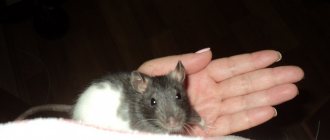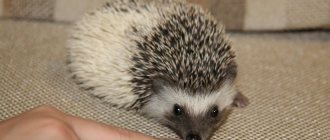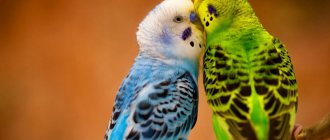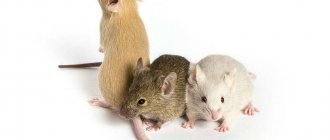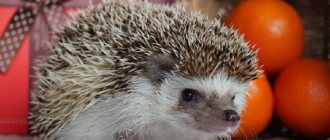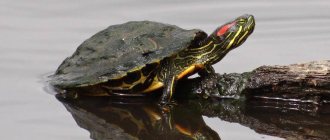At home, many people keep land turtles - cute reptiles with an interesting wayward character. In the wild, turtles forage on their own, eating healthy and varied foods. The daily diet of a pet reptile should also be balanced and complete, but in this case the owner is responsible for providing food for the turtle.
In the article we will talk about the features of feeding land turtles, main and additional food, healthy and harmful foods, food of animal origin, plant foods, ready-made artificial food, vitamins and mineral supplements, how many times a day to feed, whether it is necessary to give the turtle water.
Specifics of the turtle menu depending on their species
There are several species of land turtles, which are often kept at home. Each species has specific dietary preferences. Let's take a closer look.
Types of turtles and preferred food:
1. Central Asian land turtle - feeds exclusively on plant foods. Sometimes it can feast on insect larvae. Such reptiles should absolutely not be given food of animal origin.
2. Mediterranean turtles are vegetarians by nature, so their main diet is fresh vegetables, herbs, pieces of fruit and healthy plants.
3. Egyptian tortoise - the diet of this reptile consists of various herbs, plant flowers, leaves, and roots.
Is it necessary to install a water bowl for a turtle?
When setting up a terrarium, many owners install a special drinking bowl. This is done in order to provide the animal with water. However, there is no need for a drinking bowl: it has already been said above that it is difficult for turtles to drink, since water pours out of their mouths. Often, owners begin to think that this is a symptom of some dangerous disease, and take the turtle to the veterinarian. There is no need to worry: the fact is that turtles (and many other reptiles) do not drink like cats or dogs, but by absorbing moisture while swimming or eating juicy fruits and vegetables. For this reason, the turtle does not need to install a drinking bowl: sometimes the water even irritates the animal and interferes with it.
How often and at what time to feed
It is recommended to feed land turtles at the same time. For the first year of life, young individuals are fed 2 times a day, and adult representatives - every other day.
The volume of one serving is determined based on how much food she can eat in 30 minutes. Natural products are given in small pieces in the amount of 1-3 pieces. If the turtle does not eat a portion during a half-hour meal, next time you can slightly reduce the size of the pieces. In any case, the owner will have to focus on the individual appetite of the domestic reptile.
It is recommended to place food for the turtle in a special feeding bowl. You should not feed your reptile by hand. Uneaten pieces of food are removed, and the container is washed so that potentially dangerous microorganisms do not breed in it.
You should not feed your turtle spoiled or uneaten foods, as they can cause poisoning to the body.
Habitat arrangement
The reptile takes a long time to get used to new environmental conditions. To make the adaptation process easier for her, think in advance and buy everything you need to keep and care for your turtle at home.
You will need:
- Container - terrarium or aquarium.
- A small house where the animal will sleep and hide.
- Heating lamp.
- UV lamp.
- Containers for food and water.
- Thermometer.
- Substrate.
- Caches.
A waterfowl reptile needs a separate aquaterrarium with a capacity of about 100 liters. Water should take up most of it. Red-eared turtles require a space of more than 200 liters.
Additionally, a filter is installed. Turtles excrete a lot of waste products, and unfiltered water will be very dirty. Change at least 20% of the fluid every week.
Tap water is purified from chlorine and heavy metals before use. Add special conditioners to the terrarium liquid - they will neutralize turtle feces.
Use a heater to maintain the water temperature at 25-28 ºС. If it is cold, the animal will become lethargic, its metabolic processes will slow down, and there will be problems with digestion.
This condition is unacceptable - it leads to the death of the turtle. To maintain the desired temperature, install a thermostat in the terrarium.
Equip a separate area of land with a bridge where the animal can get out of the water. The island should be comfortable and smooth. Place a UV lamp on it.
Ultraviolet light promotes the release of vitamin D, without which calcium cannot be absorbed. A deficiency of this element leads to rickets, a fragile shell.
The temperature of the island of land should be 30-32 ºС. Turn off the UV lamp and heating at night.
Place stones the size of the turtle's head or larger at the bottom of the terrarium so that it cannot swallow them. Decorate your reptile's home with artificial plants - the living ones will be eaten. Use primer solely for aesthetics.
If you have a land turtle, it is advisable to choose glass housing for it. But a wooden box will also work if one side is transparent. The conditions in it - filling, lighting, additional elements - should be close to the natural environment.
Make sure there is good ventilation. The holes should be located at different levels on opposite sides of the terrarium.
Cover the bottom of your pet's home with hay. It is easy to change, it is comfortable to lie on, and the animal will not be able to swallow straws, which cannot be said about sand or small pebbles.
You can only use large pebbles on which the turtle will sharpen its claws. Corn mulch or cellulose filler is also used as bedding. They are easy to clean and a turtle can happily burrow into them.
Build a sleeping place from a plastic flower pot cut in half or use a wooden house for rodents.
Securely secure the feeder and water bowl. The turtle should not turn over “kitchen utensils” while walking around the terrarium.
Buy a mineral stone: the animal will chew on it and get extra calcium, and also sharpen the rhamphotec (beak). Install a heating lamp near the feeder and drinker; do not allow the air temperature to drop below 30ºC.
An ultraviolet lamp will imitate the sun's rays. The required power of the device is 10-12% UVB (UVB 200).
It's also worth knowing that reptiles transmit serious diseases, such as salmonella. Wash your hands thoroughly after direct contact with an animal.
General Tips
For both types of turtles, the water must be clean, without impurities. You should not collect it from the tap if you are not sure of the quality of the tap water - this can harm your turtle. Also, the water should be warm - reptiles are cold-blooded animals, which means they hibernate in the cold. It is necessary to ensure that the water is heated to the temperature required for a particular type of turtle, most often 25-30 degrees.
Most turtles need to have their claws trimmed regularly if they become overgrown and interfere with your pet's ability to move around. Aquatic turtles molt—the top layer of plates that make up their shell peels off. There is no need to worry, this is a completely natural and painless phenomenon for turtles.
Of course, each type of turtle has a special approach, but all of them, without exception, need water to exist, so take care of its decent quality.
Three groups of turtles
Based on their feeding type, turtles are divided into three groups: carnivores, omnivores and herbivores. Each of them corresponds to a certain ratio of animal and plant food. Feeding inappropriate food for each group of turtles is fraught with diseases of the internal organs, digestive complications, and metabolic problems. You also need to include calcium and vitamins in your diet weekly. What food should be given to each group?
Predatory
The food of predatory turtles should consist of 80% animal food and 20% plant food. This group includes almost all aquatic species and all young aquatic ones, such as young red-eared, caiman, trionics, swamp, musky, etc.
The main food for them is:
- lean fish, live or thawed, with entrails and small bones. For young turtles, the fish should be finely chopped (backbone, excluding ribs) with bones, for adults - whole or large pieces. Large bones can be ground or finely chopped.
- beef or chicken liver is given once a week;
- seafood such as green (not pink) shrimp, sea cocktail;
- mammals (small): naked mice, rat pups, runners.
The turtle can eat all seafood, as well as fish, only raw; heat-treated food should not be given;
Additional food, which should be given once a week, is:
- Dry food for freshwater turtles, for example, in the form of sticks, tablets, flakes, granules, capsules, Sulfur, etc.
- Insects: moth, food cockroaches, grasshoppers, bloodworms, crickets, earthworms, gammarus and so on;
- Mollusks, amphibians, invertebrates: slugs, frogs, small snails with shells, tadpoles and similar swamps.
Harmful products
Some plants are harmful to reptiles:
- medicinal plants containing alkaloids;
- poisonous plants of the nightshade and buttercup families;
- dieffenbachia;
- elodea;
- spurge;
- azalea;
- hydrangea;
- daffodils;
- ambulia;
- saffron;
- cyclamen;
- digitalis;
- delphinium;
- lily;
- jasmine;
- lupine.
The following products are contraindicated:
- boiled, fried, boiled food;
- sausages, minced meat, pates;
- citrus;
- tops, root crops of radishes, potatoes and radishes;
- avocado;
- eggplant;
- gooseberry;
- parsley;
- cabbage;
- rhubarb;
- berry, fruit seeds;
- porridge;
- dairy products;
- bread;
- food for warm-blooded animals;
- crab sticks;
- tomatoes.
Products available in limited quantities:
- apples;
- corn;
- radish;
- asparagus;
- squid;
- legumes;
- cereal grains, mustard;
- fatty fish and meat;
- pineapples;
- raspberries, strawberries;
- watermelon and melon;
- locusts, crickets, cockroaches;
- onion garlic;
- basil;
- too sweet fruits and berries.
Principles of feeding aquatic turtles
Main set of products:
- River and sea low-fat fish (pollock, hake, cod, navaga, perch);
- Liver (beef, chicken, fish) - about once a week.
For adult animals, large fish need to be cut into pieces, the backbone crushed, crushed, small fish can be fed whole. For young fish, the fish should be cut into small pieces along with the bones, after removing the ribs. Addition to the main menu:
- Various raw seafood (shell shrimp, squid, octopus - tentacles only, mussels, oysters);
- Meat (crabs, frogs, fodder hairless mice, baby rats);
- Snails (helix aspera terrestrial, large pond snails, apple snails, coils) - feed small ones whole, large ones - without shell;
- Some insects, other living microorganisms (bugs, food cockroaches, earthworms and mealworms, hairless caterpillars, daphnia, fillies, bloodworms, gammarus, tubifex, woodlice);
- Some plant components (aquatic plants, fruits, vegetables, some types of cabbage);
- Special industrial food for certain types of freshwater turtles (loose, granular, in the form of tablets, sticks, flakes, capsules).
Feeding features of the species
All natural species of turtles are divided according to their feeding method into three large orders:
- predatory;
- herbivores;
- omnivores.
Each of them has their own list of food products necessary for a full-fledged existence. But among the land species of turtles there are no predators, so it is important to consider only the diet of herbivores and omnivores. When purchasing these pets, it is imperative to find out what type of food they belong to.
The omnivorous species that are suitable for keeping at home and most often found in the world are the Mediterranean, musk, flat and Balkan.
Herbivores include star, Indian, Central Asian, Egyptian, serrated, red-headed, radiated, Galapagos.
Omnivores
Their diet must necessarily consist of live food, for example:
- mice and small rats;
- frog;
- snails;
- insects - tubifex, bloodworms, daphnia, beetles, caterpillars, worms;
- slugs;
- fish and seafood.
The plant part of the diet should contain:
- vegetables;
- fruits;
- berries;
- aquatic plants;
- various herbs.
Article on the topic: What to feed a turtle in winter: the diet of land and red-eared turtles in winter
Herbivores
80% of the diet of these land turtles should be products of plant origin - various salads and spinach (leafy part), dandelion, cabbage.
Additional food:
- vegetable crops - pieces of carrots, cucumbers, zucchini, tomatoes, sweet peppers;
- fruits - apples, pears, peaches, apricots, bananas, citrus fruits;
- berries - cherries, raspberries, strawberries, grapes, currants, watermelon;
- other herbs - coltsfoot, sorrel, plantain, alfalfa, legumes;
- mushroom crops, such as champignons;
- special prepared food;
- bran and flakes from plant crops, sunflower seeds.
We recommend reading the article on what to feed pet turtles.
Content
“I want to have a turtle at home,” parents often hear from their children. This reptile is an ideal pet for a child, recommended by doctors, because, theoretically, it does not cause allergies.
On the other hand, they are demanding and rather fragile animals. A common mistake in keeping pet turtles is to simply keep them on the floor. They need to be provided with proper temperature, humidity, soil, and safety.
First you need to decide whether the turtle will be an aquatic pet or a typically land turtle. Each group requires different conditions. If it is water-land, a suitable aquaterrarium with the required amount of water is created.
How to bathe a turtle so that it does not lack moisture?
Bathing a turtle is not done to give the pet the opportunity to get the required volume of liquid, but also for hygienic purposes. It is important to follow some simple rules that will make it possible to achieve both of these goals.
Here are the basic rules for bathing a land turtle:
- The animal needs to be bathed a couple of times a week. However, you do not need to wash your turtle with soap more than once a week. If your pet's diet contains the required amount of fresh, succulent food, bathing for watering is enough once every two weeks. However, this will not allow you to keep the turtle clean, and two baths a week will allow you to both give the animal something to drink and bathe it;
- Carefully monitor the volume of water and its temperature. Turtles are cold-blooded animals, and their activity level is directly dependent on the ambient temperature. For swimming, you should take water whose temperature reaches 30-35 degrees Celsius. In this case, you don’t need too much water: the liquid level should reach 2/3 of the height of the animal. This will allow the turtle to feel comfortable while swimming and absorb the required amount of water through the skin;
- Do not be alarmed if a turtle defecates during water procedures: this is normal behavior for reptiles. True, in this case it is worth replacing the water immediately, since the pet is unlikely to benefit from staying in the contaminated liquid;
- The turtle should be bathed for approximately 40 minutes.
If you follow these simple rules, your pet will not lack water.
We must not forget that turtles that are sold in pet stores or markets often suffer from dehydration. Therefore, immediately after you bring your turtle home, give it a bath and give it a chance to restore its moisture balance. During the first week of the animal's stay in the house, it is recommended to bathe the turtle daily: this is the only way to normalize the fluid level and maintain the health of your pet.
If you properly care for your land turtle and regularly give it succulent food and water treatments, your pet will delight you for many years: some turtles can live up to the age of thirty or even step over this impressive milestone.
Does a land turtle need to be given water?
Even those people who carefully study all aspects of turtle care often doubt whether it is necessary to water a land turtle and how to do it correctly. There is no clear answer on the global network, and following unprofessional advice can only harm your pet. If you don’t know how to water a tortoise, our article will help you.
Walks
In the summer, the turtle must be walked. To prevent the turtle from running away and getting lost, it is necessary to build an enclosure or fence for it. It is very important to deepen the fence a few centimeters into the ground, since turtles like to burrow into the grass or soil.
Despite the slowness of the land turtle, it is easy to overlook and get lost in the grass. Therefore, you should keep an eye on her while walking.
Do not leave your turtle in direct sunlight. She must have a dark or secluded place where she can hide.



